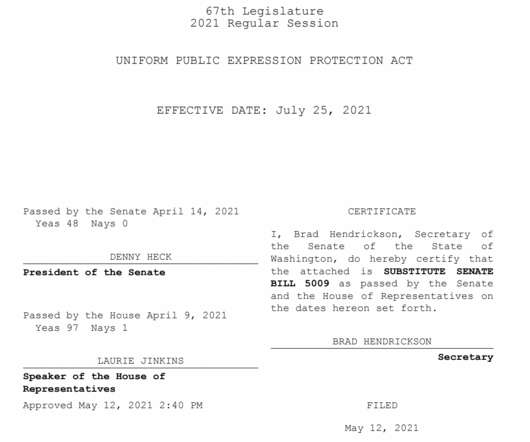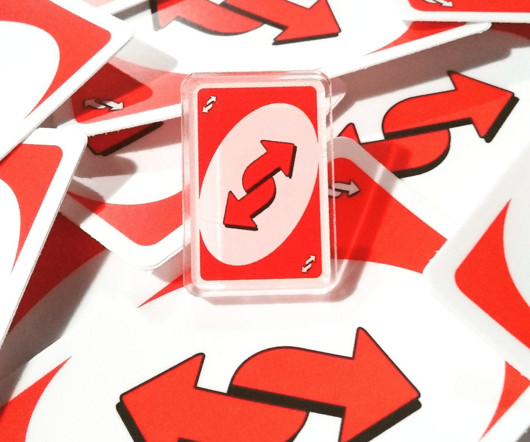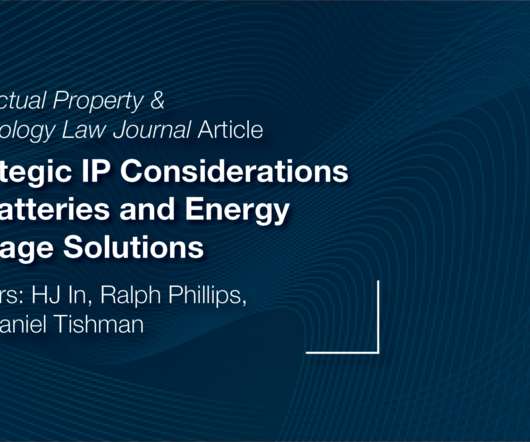An Initial Look at Washington’s New Anti-SLAPP Statute
Technology & Marketing Law Blog
AUGUST 3, 2021
Washington’s anti-SLAPP statute was struck down by the Washington State Supreme Court in May 2015. The post An Initial Look at Washington’s New Anti-SLAPP Statute appeared first on Technology & Marketing Law Blog. Effective July 25, 2021, Washington has a new anti-SLAPP statute.












Let's personalize your content